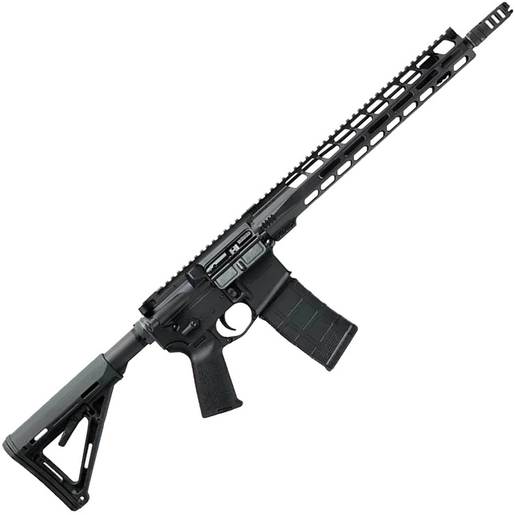California’s petty attempt to undercut “gun culture” by eliminating gun shows ignores serious conflicts with both the First and Second Amendments, justified by phantom claims of “protecting public safety”. California Rifle & Pistol Association (CRPA) has fought these bans every step of the way. Today, we bring the case to the highest court in the land.
“Our Crossroads of the West and CRPA plaintiffs had no choice but to ask the Supreme Court to correct the Ninth Circuit’s misguided decision to ignore the law of what speech is constitutionally protected and completely ignore the Supreme Court’s directive in Bruen,” stated CRPA President & General Counsel Chuck Michel. “We are hopeful that the Supreme Court will see the merit of our positions and grant cert to protect the rights of tens of thousands of lawful gun owners in California to assemble and enjoy the comradery and benefits of gun shows.”
Attorney Anna Barvir stopped in to chat with CRPA TV host Kevin Small to provide some perspective on the filing. Watch CRPA TV above!
B&L Productions, Inc. v. Newsom Background
This case, B&L Productions, Inc. v. Newsom, revolves around California’s legislative efforts to prohibit the sale of firearms and ammunition on state-owned properties, effectively banning gun shows at these venues. The laws were enacted out of apparent legislative animus toward the “gun culture,” targeting lawful commerce and speech related to firearms. Petitioners, including B&L Productions, which organizes gun shows, argue that these laws violate their First Amendment rights (freedom of speech), Second Amendment rights (commerce necessary for exercising the right to keep and bear arms), and Fourteenth Amendment rights (Equal Protection Clause due to discriminatory animus).
Key background points:
- California’s Ban on Gun Sales at Public Venues: The state enacted laws banning firearm and ammunition sales on state-owned properties, such as fairgrounds. These laws do not outright prohibit gun shows but aim to dismantle their financial viability by forbidding sales.
- Strict Regulation Compliance: Gun shows in California are already subject to rigorous state laws, including background checks, waiting periods, and strict compliance with all firearm sale regulations.
- Litigation History: Petitioners filed suits claiming violations of constitutional rights. The district courts issued conflicting rulings, with one granting a preliminary injunction and the other dismissing the case. The Ninth Circuit reversed the injunction and upheld the dismissal, claiming that sales-related speech is not protected and that the Second Amendment claims did not meet a “meaningful constraint” test.
- Constitutional Conflicts: The case challenges:
- The First Amendment’s protection of commercial and expressive speech.
- The Second Amendment’s protections of ancillary rights necessary for lawful commerce in firearms.
- The Equal Protection Clause, given the discriminatory targeting of gun shows based on ideological hostility.
The Ninth Circuit’s rulings have been criticized for deviating from Supreme Court precedents and undermining constitutional protections. Petitioners seek review from the Supreme Court to restore the preliminary injunction and invalidate California’s laws.
CRPA filed a petition for a writ of certiorari with the Supreme Court requesting their consideration of the case of B&L Productions, Inc. v. Newsom. The lead plaintiff in the case, more commonly known as Crossroads of the West, has been barred from producing shows on state-owned lands such as fairgrounds for several years. The state falsely claimed firearms acquired at gun shows were disproportionately used in crimes as the motivation for the ban.
CRPA immediately challenged the law in court and the case has followed a circuitous, and often confusing, path ever since. In June a ruling by the Ninth Circuit upholding the ban employed some curious logic to skirt right around the fact that the law even confronted the First and Second Amendments. They held that an offer to sell a firearm was an “expressive” act covered by the First Amendment, but that the act of agreeing to purchase it was NOT an expressive act.
“We are at a point where California has essentially ignored the Supreme Court’s ruling in 2022 that eliminated the use of ‘judicial balancing tests’ when deciding Second Amendment claims,” noted SAF founder and Executive Vice President Alan M. Gottlieb, “while trampling on the First Amendment protections of speech which is necessary for the commerce of lawful products.”
“California’s laws and policies are being used to prevent gun owners, who are honest and peaceable citizens, from congregating and conducting lawful commerce on public property,” noted SAF Executive Director Adam Kraut. “If the state is allowed to continue, neither the First nor Second Amendments are safe from California’s legal choke hold. We are hopeful the Court will grant certiorari.”
The Ninth Circuit court went on to dismiss the Second Amendment challenge by, ironically, quoting the Bruen decision as requiring a finding that the law in question relates to conduct covered by the Second Amendment. The court then explains that while the Constitution conveys the right to “keep and bear arms”, it does not speak to protecting one’s right to actually purchase them. And with that, the first two articles of the Bill of Rights are dispensed with and a law prohibiting the exercise of fundamental rights was upheld.
The California Rifle & Pistol Association has worked alongside the Asian Pacific American Gun Owners Association, Second Amendment Law Center, and Second Amendment Foundation in this case. As we’ve noted many times, cases that impact the manner in which Bruen is applied, regardless of where they begin, are critical to all corners of the country.
from https://ift.tt/NvhUOak
via IFTTT











 and forging a Sharper Future for all Americans
and forging a Sharper Future for all Americans







